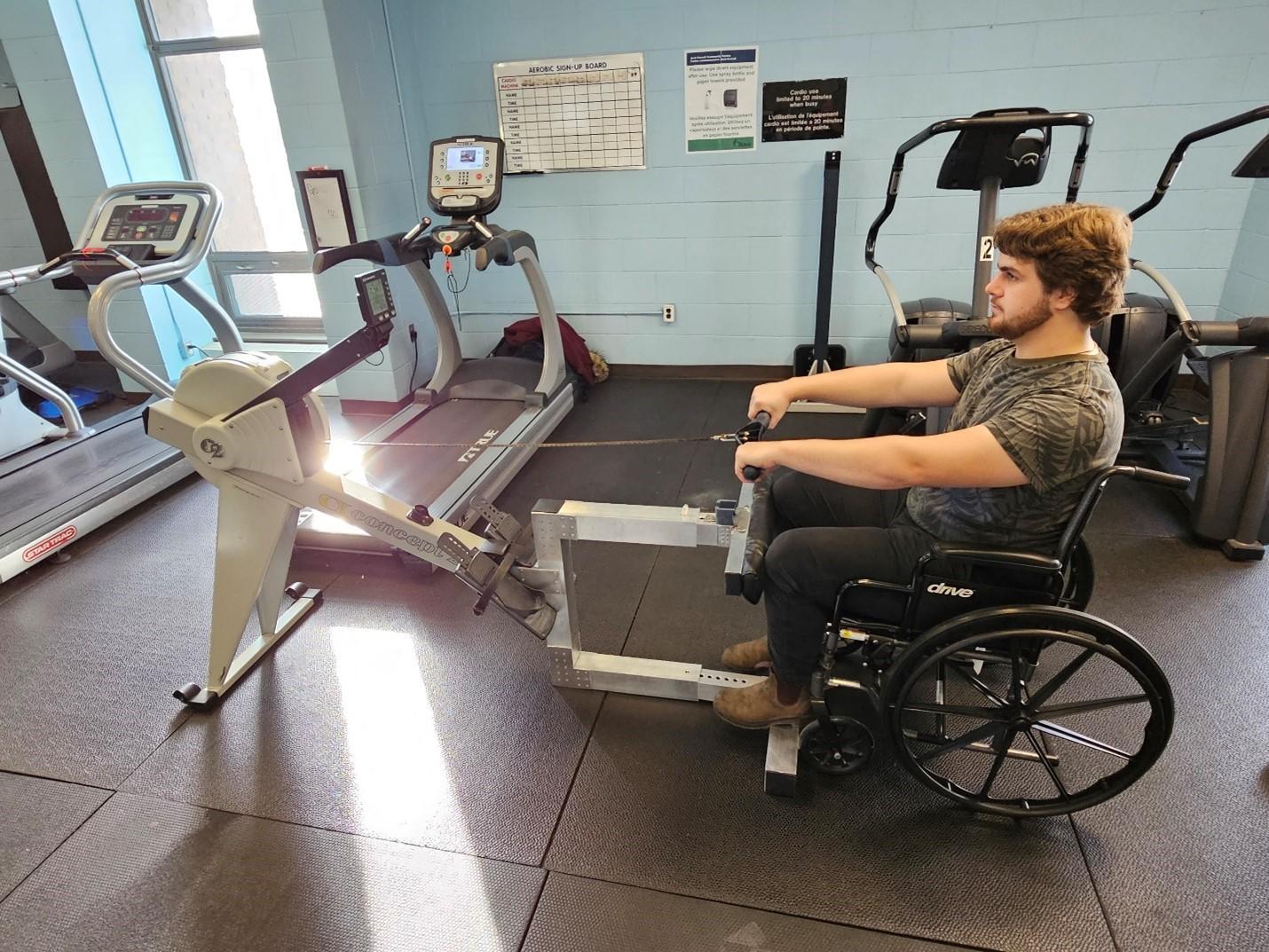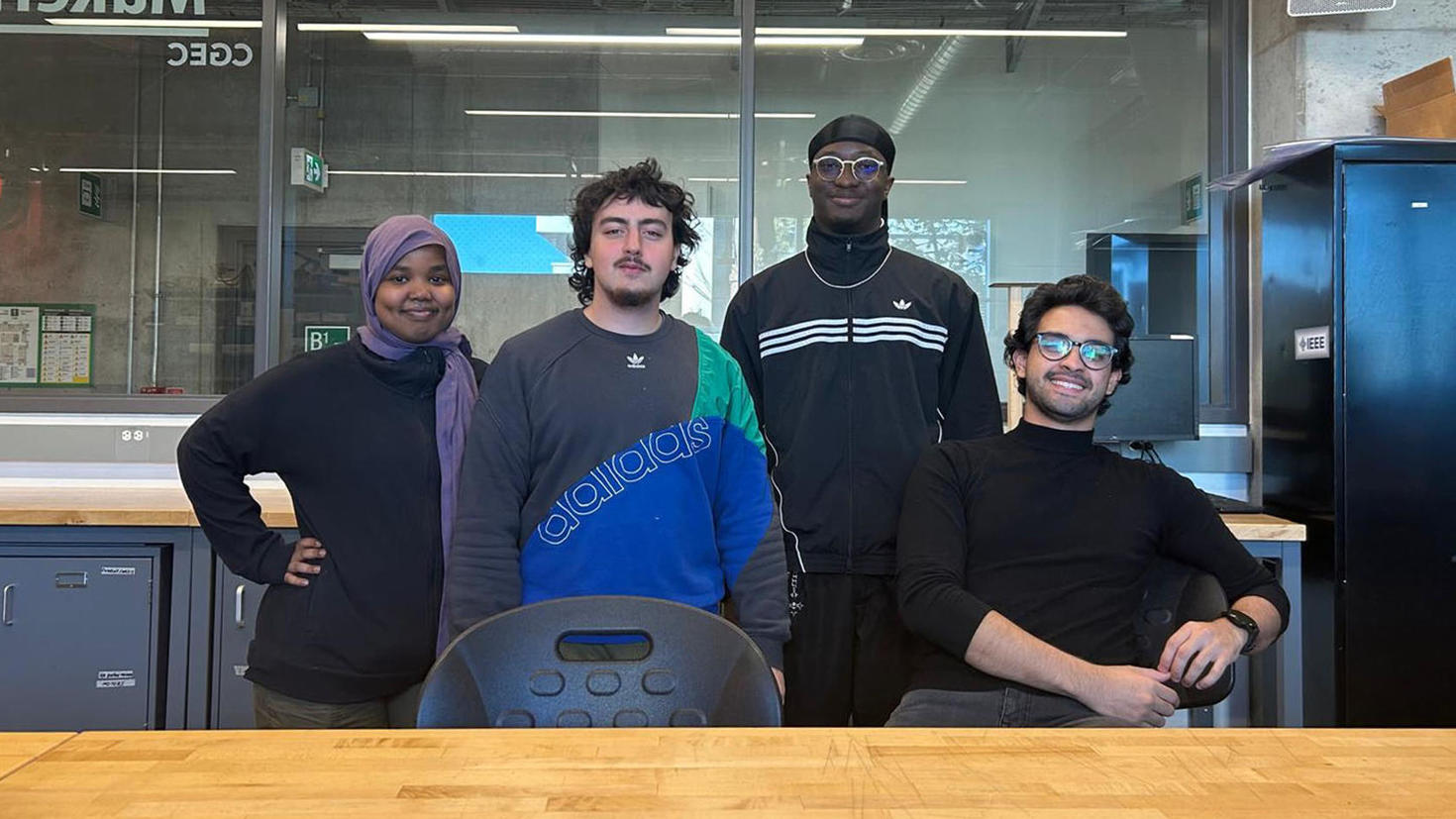Unveiled at Design Day, the team’s prototype stands out for its innovation. It features all-terrain tires fitted with miniature brushes that improve traction and remove snow and salt buildup from the wheels. These features improve stability and safety on slippery surfaces.
Designing with empathy: Engineering that puts people first
Before diving into the design process, the team took the time to listen to its client to gain a clear understanding of the latter’s needs and challenges. “We carefully observed the situation, asked open-ended questions and embraced silence as a time for reflection,” says Marie-Soleil Labelle, one of the student engineers. Thanks to this client-centred approach, student projects are able to create meaningful impact and genuinely support people living with mobility challenges.
For Labelle, the key to the team’s success was effective collaboration, fostered by active listening, adaptability and mutual respect. “Our team contract kept us grounded throughout the project, helping us maintain a healthy, supportive environment,” she says. This dynamic allowed members to thrive both individually and as a group.

“Our team contract kept us grounded throughout the project, helping us maintain a healthy, supportive environment. This dynamic allowed members to thrive both individually and as a group.”
Marie-Soleil Labelle
— Student at the Faculty of Engineering
Drawing on their research into the limitations of existing walkers, the students initially developed a simple traction strip, which quickly evolved into a complete redesign of the wheel.
Using SolidWorks and Onshape design software, the team created a more durable all-terrain model, which it then brought to life with 3D printing. Inspired by the mudguards used on vehicles, the built-in mini brushes sweep away snow, water and salt, keeping the wheels turning smoothly and safely all year long.
Collaborative learning inspired by real-life cases
For Professor Geneviève Dumond, this type of project perfectly illustrates the value of experiential learning when applied to real-life cases. Her role was to help students through the design process by holding weekly progress meetings and offering constructive feedback. “We set milestones, but no strict deadlines,” she says. “Students learn to manage their time, be responsible and deliver high-quality work for a real client, not just to earn a grade.”

“Students learn to manage their time, be responsible and deliver high-quality work for a real client, not just to earn a grade.”
Geneviève Dumond
— Professor at the Faculty of Engineering
This sense of autonomy sparks creativity and engagement. “When students are accountable to an actual client, their motivation shifts. It strengthens their sense of responsibility,” says Dumond. She adds that the impact of “real experience” extends well beyond the classroom. “It’s more than a course —it’s a life experience. Students still reach out to me about it years later,” she says.
Design Day: A spotlight on student innovation
Beyond technical considerations, students report gaining the ability to balance creativity, precision and empathy.
“It’s always a highlight,” says Dumond. “The students take great pride in presenting their prototypes, and the connections they form with their professors run much deeper than those formed in a lecture hall.”
For Labelle, the experience also goes beyond the technical.
"I realized that engineering isn’t only about optimizing performance," she says. "It’s about designing with empathy, considering users and seeking sustainable, accessible solutions. For me, social responsibility is what brings real purpose to the profession."
Design Day is a signature event for the University of Ottawa Faculty of Engineering, bringing together industry professionals, students, clients and professors. Open to the public, the event features projects developed in customer-focused courses. While prizes are awarded for outstanding achievements, the true highlight is the shared pride in the work accomplished.


